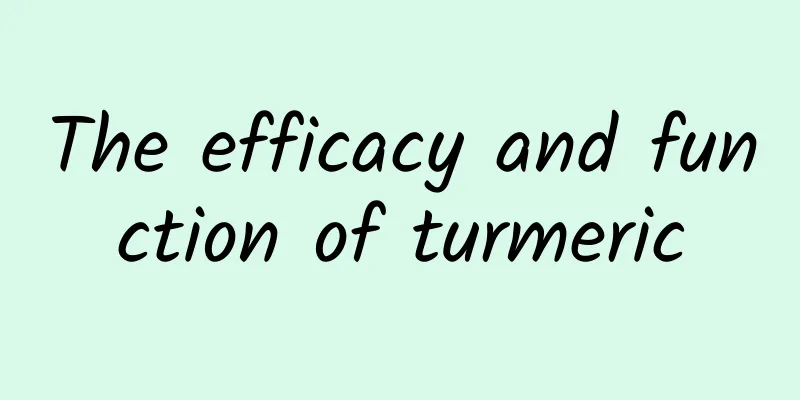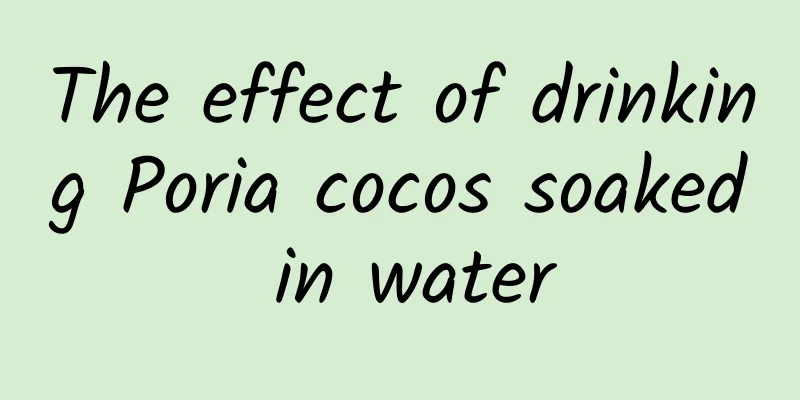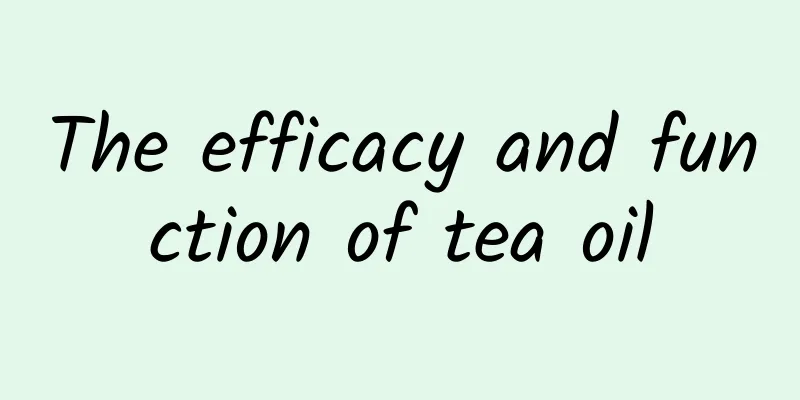The efficacy and function of turmeric

|
Turmeric is a traditional Chinese medicine. Do you know its medicinal value? How does Chinese medicine use turmeric to treat diseases? And what should you pay attention to when using turmeric to treat diseases in daily life? Don't worry, we will answer them one by one for you. 【Other Names】 Yellow ginger, tiger ginger, monkey lotus [Source] Medicinal material source: The rhizome of Dioscorea opposita, a plant of the Dioscoreaceae family. [Original form] Yellow yam is a twining herbaceous vine. The rhizome is horizontal, cylindrical, irregularly branched, and has sparse fibrous roots on the surface. The stem is left-handed, smooth and hairless, straw yellow, sometimes with purple. Simple leaves are alternate; the leaves are triangular-cordate, gradually pointed at the apex, deeply cordate or broadly cordate at the base, entire or with wavy edges, chestnut brown or black on the surface after drying, whitish on the back, and nearly glabrous on both sides. Flowers are dioecious. The male flowers are sessile, yellow-green when fresh, solitary or in clusters of 2-3 flowers forming spikes, the inflorescences are branched and present panicles, solitary or in clusters of 2-3 flowers in the leaf axils; the bracts are boat-shaped, and the bracteoles are the same shape as the bracts but smaller; the perianth is saucer-shaped, with 6 lobes at the apex, the lobes are oval, with yellow-brown spots inside, and flat when open; there are 6 stamens, inserted at the base of the perianth tube, and the anthers are dorsifixed. The female inflorescence is basically similar to the male inflorescence; the female perianth is 6-lobed and has 6 reduced stamens. The capsule is triangular, truncated or slightly concave at the apex, narrowly rounded at the base, each rib is wing-shaped and semi-lunar, the surface is brown or chestnut brown, shiny, and densely covered with purple-brown spots. When ripe, the fruit bends retroflexively and droops; there are usually 2 seeds in each chamber, attached to the middle of the central axis. The flowering period is from May to July, and the fruiting period is from July to September. [Habitat distribution] Ecological environment: Growing under shrub forests on hillsides at an altitude of 1000-3500m, or only found at the edge of dense forests or on hillside roadsides. [Properties] Property identification: The rhizome is cylindrical, some are slightly curved, and the diameter is 2-3cm. The surface is yellow-brown with longitudinal wrinkles and roots or root marks, which are dark brown. It is hard and tough, and when broken, the cross section appears white and fluffy with many yellow dot-like vascular bundles scattered around. Slight odor, slightly sweet taste. [Chemical composition] The root tuber contains diosgenin, yamogenin, dioscin and gracillin. 【Nature and flavor】 Slightly pungent; Slightly pungent; Flat 【Functions and indications】 Regulating qi and relieving pain; detoxifying and reducing swelling. Mainly used for stomach pain; vomiting, diarrhea, abdominal pain; injuries from falls and strains; sores, swellings, poisonous snake bites [Usage and Dosage] For oral use: decoction, 15-30g. For external use: appropriate amount, squeeze out the juice from fresh product; or mash it for application. 【Excerpt】 Chinese Materia Medica The above content is an introduction to the effects and functions of the traditional Chinese medicine turmeric. I hope it can be of some help to you. The culture of traditional Chinese medicine is profound and extensive. When treating diseases, we need to choose different medicines according to the different diseases to better help the body relieve troubles. |
<<: The efficacy and function of Selaginella chinensis
>>: The efficacy and function of arrow shaft wind
Recommend
Qinling Mountains-Huaihe River, why is it called the dividing line between north and south China?
Excerpted from: Inside and Outside the Classroom ...
It’s true that your brain stops working! Thinking can also make you tired!
After finishing a day's work, modern workers ...
What is the "Disease X" that the WHO has repeatedly warned about? | BoLan Daily
Your best "insider" in the scientific c...
The efficacy and function of water hemp
Water hemp is a medicinal material that can treat...
The current status and prospects of unmanned systems application on the battlefield
At the beginning of the 21st century, the deploym...
An unexpected discovery: Cancer cells are more active when we sleep?
Some scientists stay up until the early hours of ...
The efficacy and role of horse tooth guanzhong
As a traditional Chinese medicine, do you know th...
We published an article in Physics Today, revealing another Nobel Prize-winning contribution of Wu Jianxiong that was buried
From the meeting at Yang Zhenning's home in 2...
Is the Turing test still relevant today?
Source: Dark Matter Articles/medium *This article...
What are the effects and functions of Imperata root?
Imperata root is a common Chinese medicine. Its m...
Can American ginseng be soaked in water and drunk every day?
American ginseng is a traditional Chinese medicin...
The more you eat, the whiter your skin becomes?! The truth is...
Whitening - an eternal topic in the skin care ind...
China's Sky Eye searches for aliens
During the May Day holiday, the touching story of...
Itchy~itchy~itchy~ Summer is related to "prickly heat"
It's not until the rain that spring has gone,...
How to dry wolfberry when it gets damp?
Wolfberry is not unfamiliar to many people. It is...


![The efficacy and role of Xiaohuanggou [picture]](/upload/images/67ca1bf16e835.webp)






